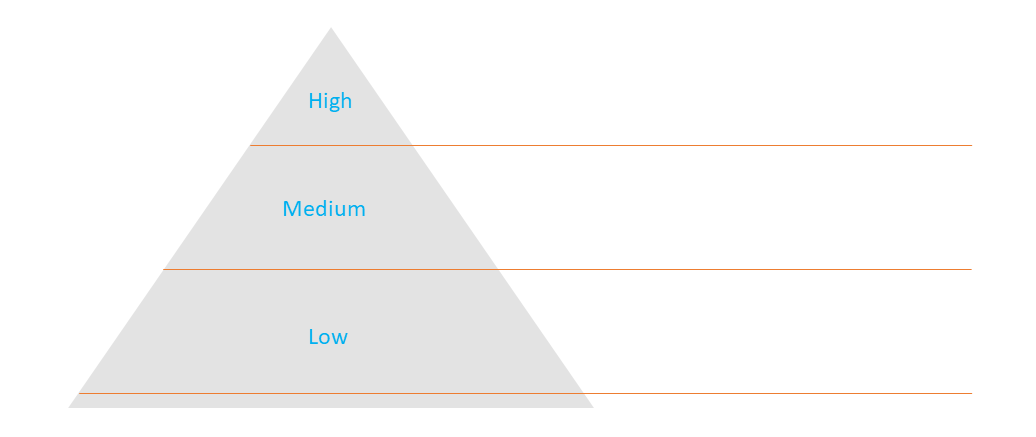

Dec 13, 2021
Do you want to get moving on your website personalization but can’t figure out how? Overcoming personalization paralysis can feel daunting, but it doesn’t have to be. In a previous post, I outlined the considerations when getting started with personalization. In this post, I’ll focus on the personalization strategy part. My goal is to briefly outline the steps to follow while planning your website personalization. I’ll emphasize how you can leverage your analytics to complete your planning.
Personalization basics consist of two parts:
- Identifying the visitor and matching them to a predefined audience segment.
- Changing the website content to deliver a tailored experience.
Your personalization strategy is the canvas for you to outline why and how you will identify your target audiences, what will be optimized for them, and where you will enhance their experience. It may sound complicated, but let’s break it down…
Why? Step 1: Establish Goals
Your personalization strategy must be driven by your marketing objectives. What do you want to achieve through your website?
Start by briefly describing the site’s single most important business objective. Then consider the visitor interactions the site provides. List the most important digital goals that help your organization achieve your organization’s primary business objective. For example, complete a purchase, request a demo, schedule an appointment, join a membership, etc.
Weigh the value of digital goals. The weight assigned to a digital goal depends upon the estimated impact that digital goal has on marketing’s key objective. Classify your digital goals as high, medium or low value.
Does this exercise remind you of the steps you followed to define your website’s Engagement Value (EV) Scale? It should! If you have an EV Scale already defined, you can definitely use it as input to rank your goals. You are doing this so that you can plan and implement the personalized experiences to increase conversion of your high-value goals.

Who? Step 2: Discover Segments
The second step is to identify actionable visitor segments.
Segments are the groups of customers you’d like to target with a personalized experience. Visitors within a segment must have something in common.
For you to include a segment in your marketing strategy, it has to be actionable. Three characteristics determine how actionable a segment is:
- Potential: business impact
- Importance: traffic volume
- Ease: ability to identify
To develop actionable segments, drive your discovery process with the qualitative (user personas) and quantitative (historical) data. Then connect the two. For example, connect:
- user persona - Anna, a new visitor who needs to achieve familiarity with the brand before converting.
- data-driven insight - returning visitors are more likely to convert than new visitors.
The hope is that by understanding your customers you can tailor your site content to be relevant, answer their needs, and remove their concerns as they move towards conversion points.
Create User Personas
A persona is a qualitative description of a visitor to your website. You create personas to describe the needs, concerns, and context of representative customers.
Do you already have personas identified? If so, you already have a foundation for actionable segments.
If you don’t have personas yet, consider the following elements. Think of them from the angle of your qualitative understanding of your customers:
- High-value actions: What are the “valuable to your business” actions that a visitor can take on your site? Use the previously defined high-value goals to identify the behaviors that you want to boost with personalization.
- Motivators: What drives visitors to complete high-value actions? Break out the different rationales that visitors might have for completing key actions.
- Awareness: What level of familiarity with your product or service is required to complete a transaction? Describe the level of awareness required to feel that the product or service you are offering is right.
- Interest: Do certain visitors exhibit a preference for a different kind of product or service? Identify different types of interests in relation to your types of visitors.
- Completion: What signals indicate that a person might be ready to complete a transaction? For example, the number of times a visitor viewed a product category page is a strong predictor of purchase intent.
Analyze Historical Data
Information on how visitors have behaved on your site in the past may be immense, and potentially overwhelming. However, many of these data points aren’t actionable. Here are some elements that can help you surface actionable data about your customers:
- Drop-offs: Cross-reference your conversion funnel behavioral performance reports, with factors like location, device type, campaign, new vs. returning, etc. Your goal is to identify common elements between users dopping off at a specific point. Then use those criteria to define a targetable segment.
- Number of transactions: Is there a cohort of visitors who you’d like to exclude from promotions based on the number of times they’ve already completed a transaction or other action? Conversely, is there a cohort of relatively inactive visitors who you’d like to incentivize more aggressively?
- Key behaviors: For example, the number of times a visitor viewed the product category page to be a strong predictor of purchase intent. When a visitor views the product category page twice, she is much more likely to complete a purchase. In many verticals, Returning Visitors are much more likely to convert than New Visitors, who are seeing the site for the first time.
Prioritize Segments
Defining a priority for the identified segments is going to allow you to plan the personalized experiences of more profitable segments. You can use a simple scale like the one below to facilitate the process:

The highest scoring segment from above is your highest priority. Then think again about the segment:
- Potential - What is the business impact that justifies the personalization? How likely is it that you can increase the segment engagement with personalization?
- Importance - What data insights justify the importance of this scenario? How big is the segment? The bigger, the better; however, low engagement segments should have lower priority.
- Ease - What technical criteria is required to identify this segment? Consider the speed at which you can assign a visitor to a segment (i.e., preferably as soon as possible after they arrive on your site).
Document your reasons for the assigned priority. This rationale will be useful to help you prioritize properly. Also, later on when it’s time to evaluate the results of your personalization hypothesis, you can go back and review your thinking and make adjustments.
What? Step 3: Map the customer journey
Depending on your industry, product, or service, you will define the stages in your customers’ journey. A typical customer journey can be segmented into four key stages:
- Need: “I want to buy a new computer.” Tactics such as offering product recommendations based on previous purchases is an example of implicit personalization looking to create desire/need.
- Research: “I’m going to take days, weeks, or months to explore different brands, models, price ranges, and reviews.” We can separate personalization tactics in two stages for this phase: awareness and consideration. First, you must target your potential customers so that they learn about your product or service. Then continue the conversation so that they keep your brand under consideration.
- Decision: “I have a top pick, this is the computer I want.” Personalization tactics that highlight your brand differentiators from competitors are key to converting undecided customers.
- Customer: “I bought a new computer today.” Once visitors become customers, you must nurture them so that they move from utilization to loyalty to advocacy.
You’ll also want to determine how these stages will live across different channels. It’s a good idea to map out customer journeys for each major channel and explore how they overlap. That way, you can continue delivering personalized content seamlessly when an end-user switches channels or devices.
Make sure that you are able to track your customers’ journey stage. Pull the numbers from your analytics to tell how many customers you have on each stage. Then plan personalized experiences targeting specific stages of your key segments journey.

Describe the visitor experience progression across the customer journey stages you want to influence.

Where? Step 4: Plan Experiences
Select the pages and components of your website where you will display personalized content to target your prioritized segments.
Craft the content that will be displayed to each segment.
Final Thoughts
By taking a methodical approach to planning your personalization strategy, you can begin making real progress toward improving your customer experience — and ultimately have a positive impact on your business objectives. Remember, it’s important to get started, even if you start slow. Before you know it, you’ll have a full-fledged personalization strategy in place.








